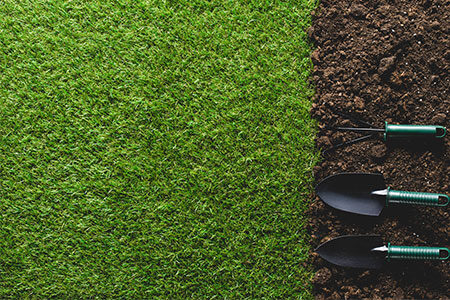
Bald patches in the grass in your garden? Here is what to do!
Most homeowners have, at some point, personally experienced the dreaded bald patch in their garden. It is important to determine the origin of the problem because each source may require a slightly different approach to care. Read MoreThere are a whole host of reasons why your garden might have bald patches- bug infestations, seasonal dryness, mowing damage, pet waste, grass diseases and killer weeds.
When to patch bare spots in your garden?
Ideally, it should be done early in the growing season so it can take root and blend into the surrounding area before the winter dormant season.
Start by raking
Remove any unwanted debris or dead grass from each of your bare spots. Once you’ve done this, take a close look at the area of the garden to see if there are any obvious signs of insect damage. The easiest way to test this is to pull up the lawn near it. If it comes up easily, there’s a pretty good chance you have a grub problem and that will need addressing. After that, it’s time to swap your gentle leaf rake for hard-toothed rake, so that you can break up the soil more easily.
Spruce up your soil
Using your hard-toothed garden rake, add a generous layer of compost or loam soil to your existing soil. Once done, flip the garden rake over and use the flat edge to even out the surface, spreading the soil mix into the lawn around it.
Sprinkle the seeds
The trick to reseeding your lawn is to spread your seeds evenly across the area. Thick enough to cover the bare surface, but not so thick that the seeds are piled up on top of each other.
Spread the seeds
Once you’ve finished sprinkling, it’s time to spread your seeds. Grab your garden rake again and use it to spread your seeds evenly. By doing this, you’ll also cover the bottom layer of seeds with soil, which will help prevent them from blowing away in the wind.
Protect your seeds
While you wait for the seeds to germinate, you might want to protect them from hungry birds. To do this, hang a CD above each bare patch, or put a reflective pinwheel in place. That should be enough to scare the birds off.
Watering is essential
Make sure you’re light on the water, keeping them moist – not wet – throughout the day. If you’re doing this through the hot summer months, you can water your seedlings and then cover them with a layer of burlap, which will provide them with enough shade to keep them from drying out.
Give your new grass seeds a chance to grow a little longer than the rest of your lawn. Of course, this might take 2-3 weeks, but the results are well worth the effort! You will be able to enjoy your nice and neat lawn, and maybe decorate your garden with some extra garden ornaments!
